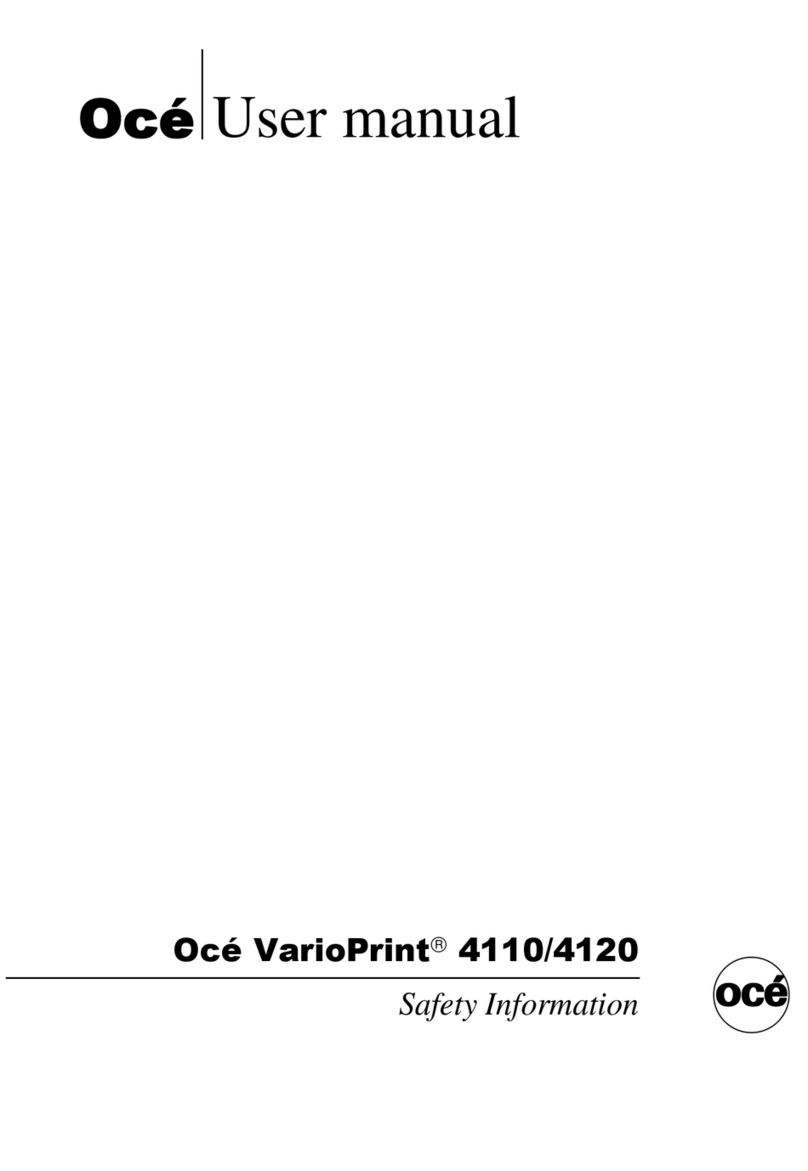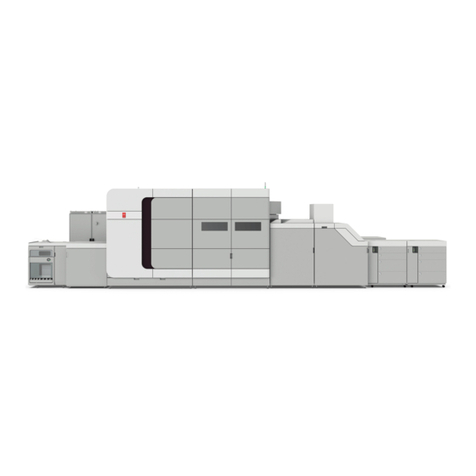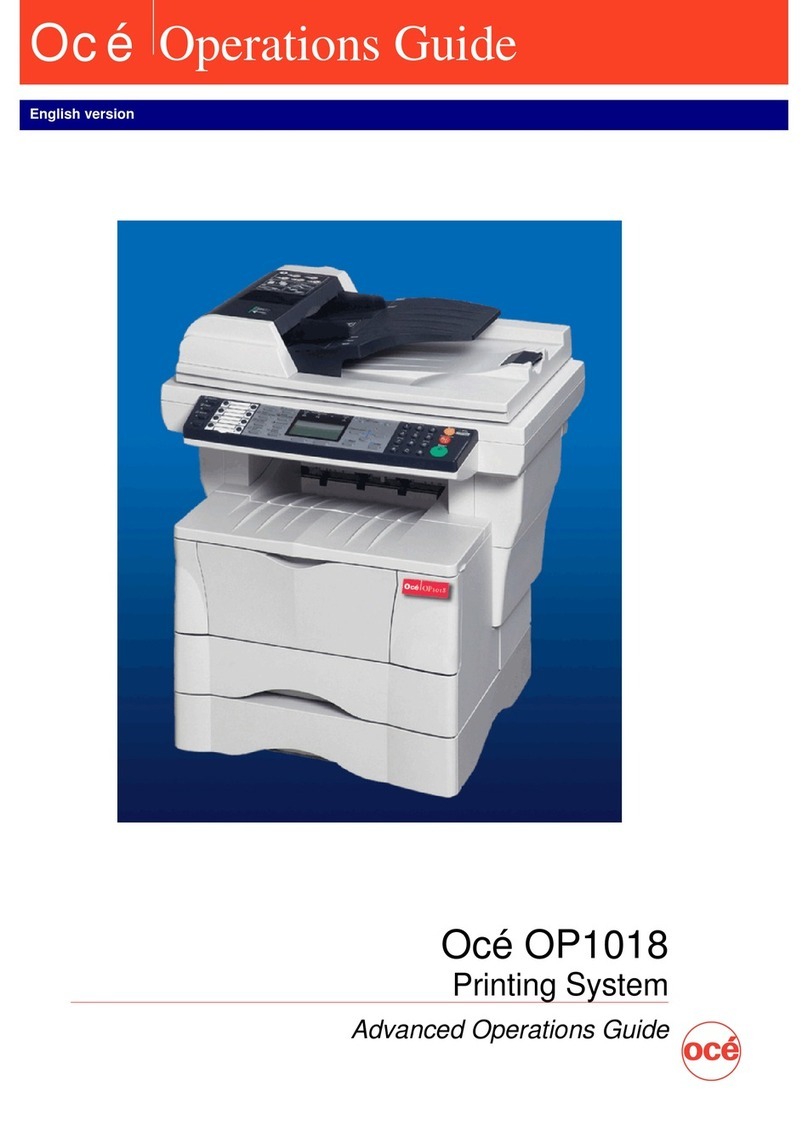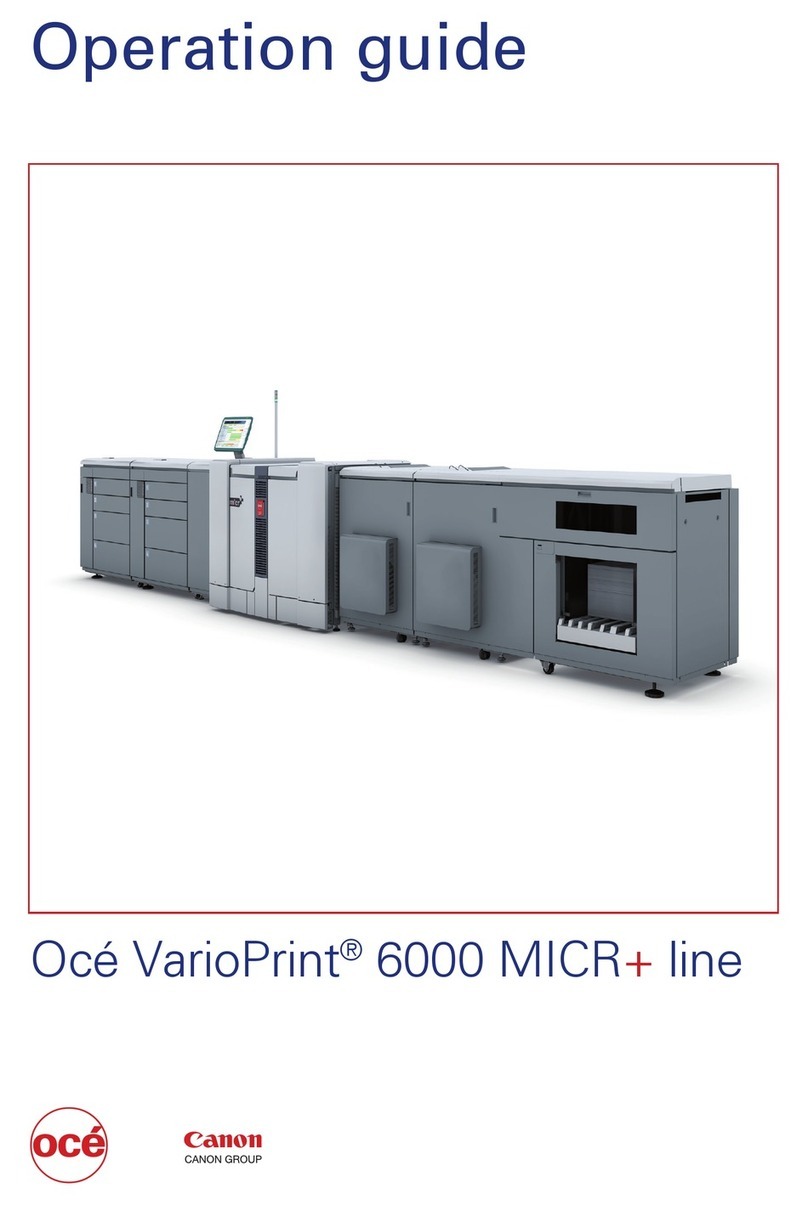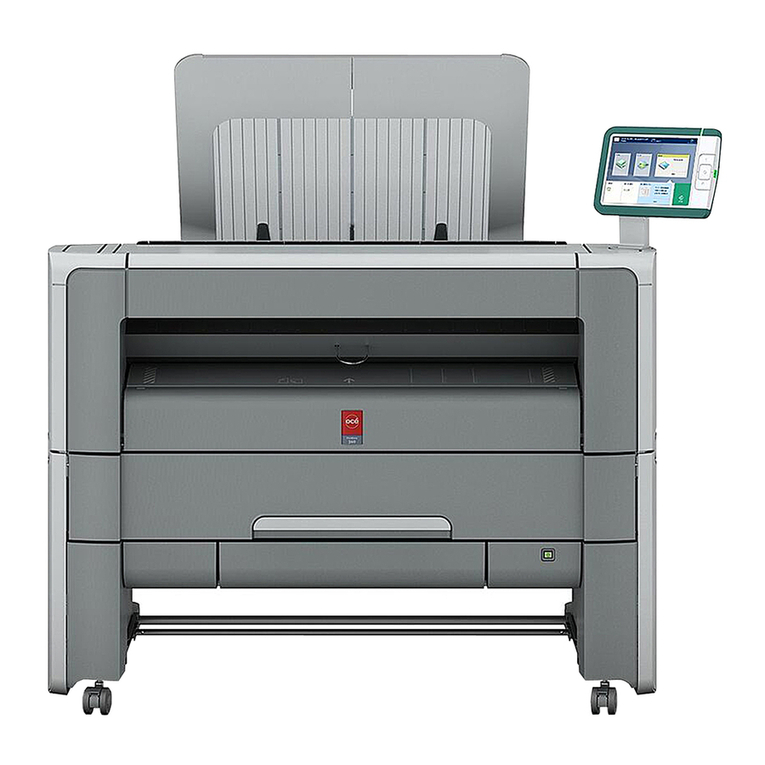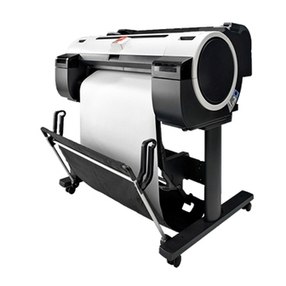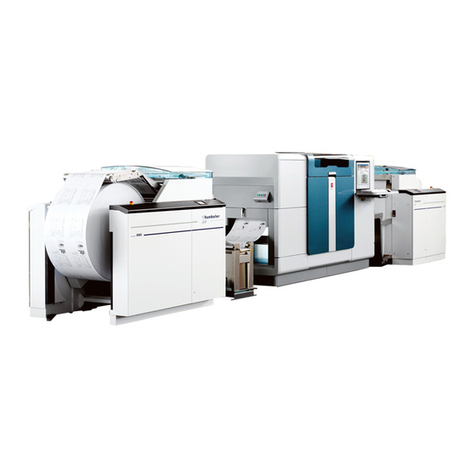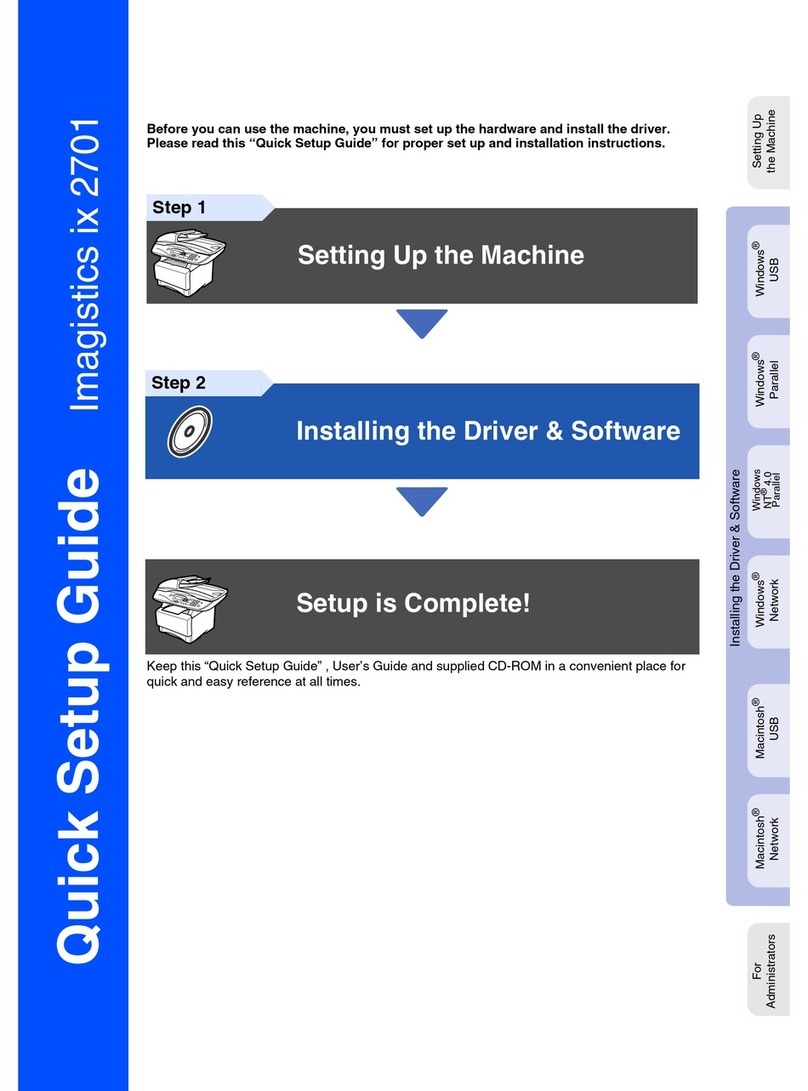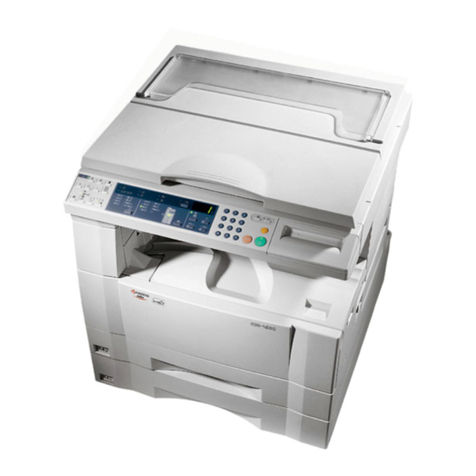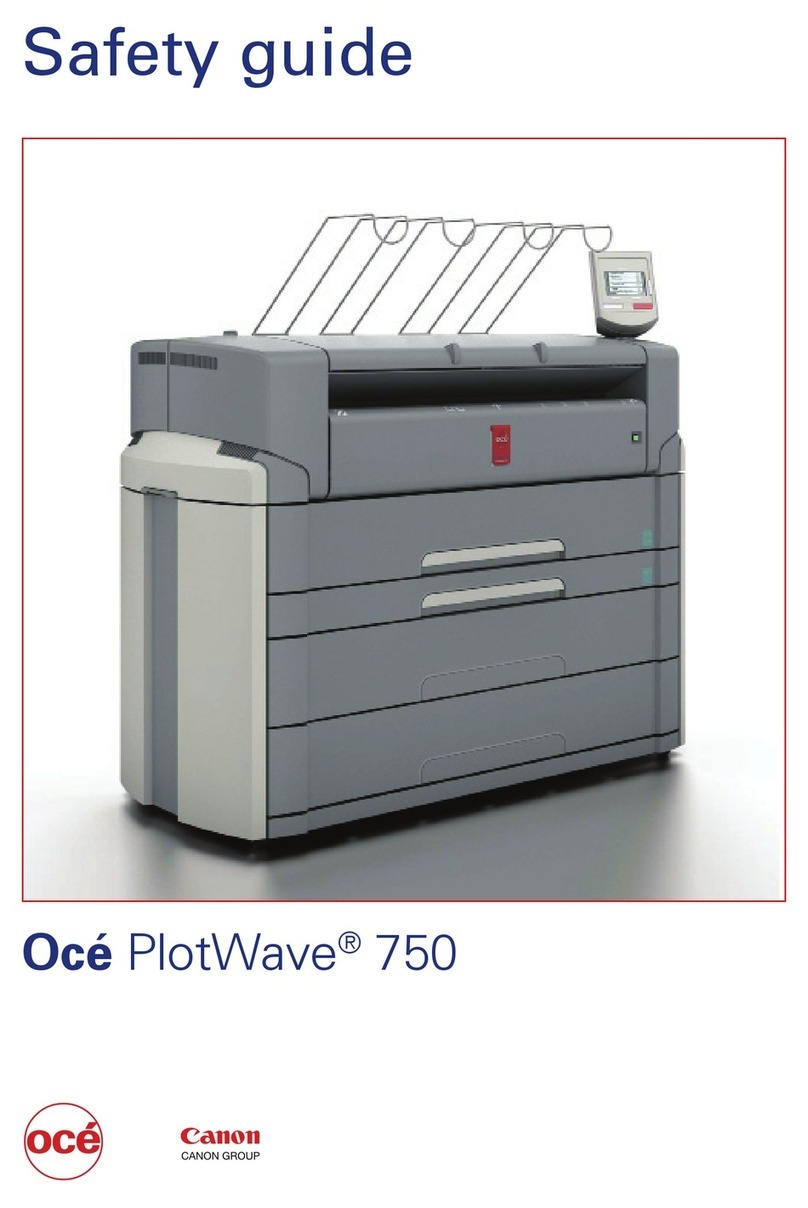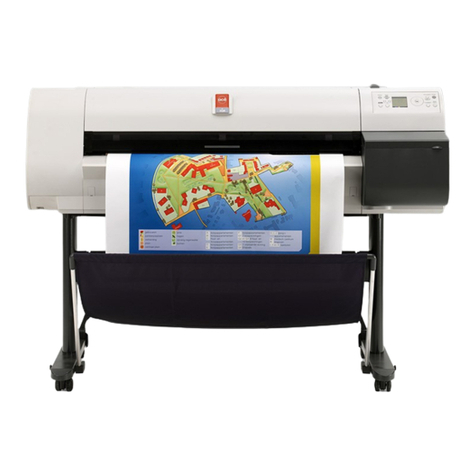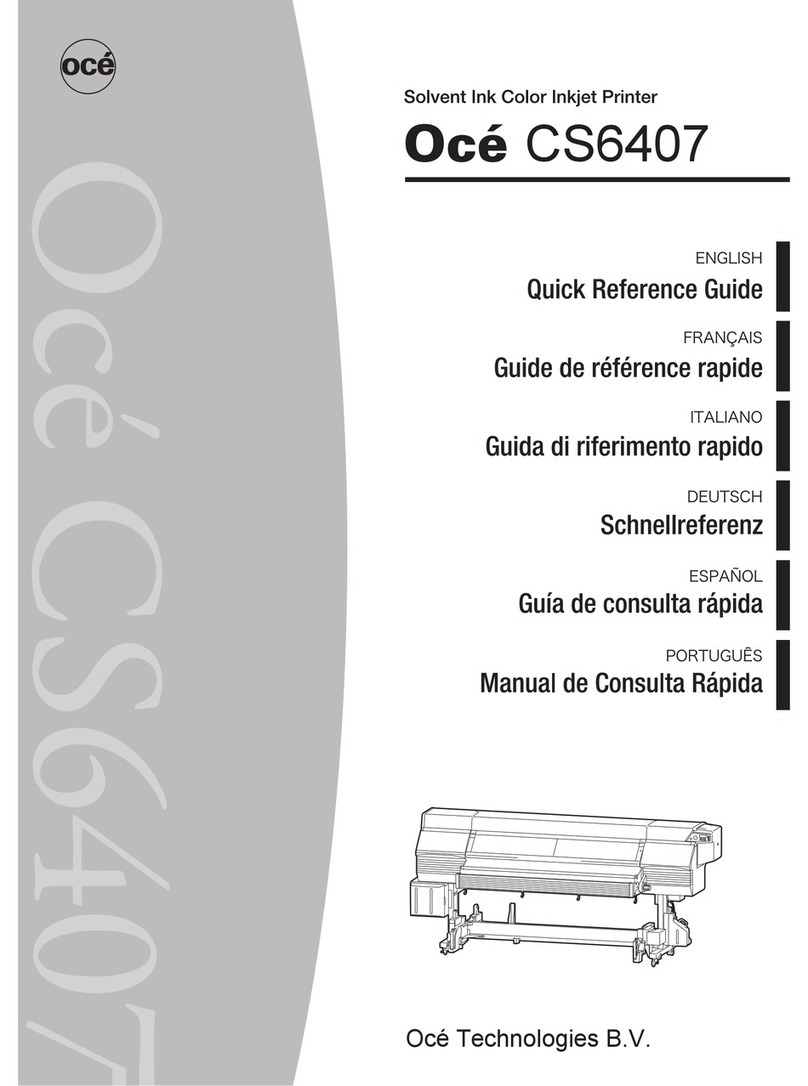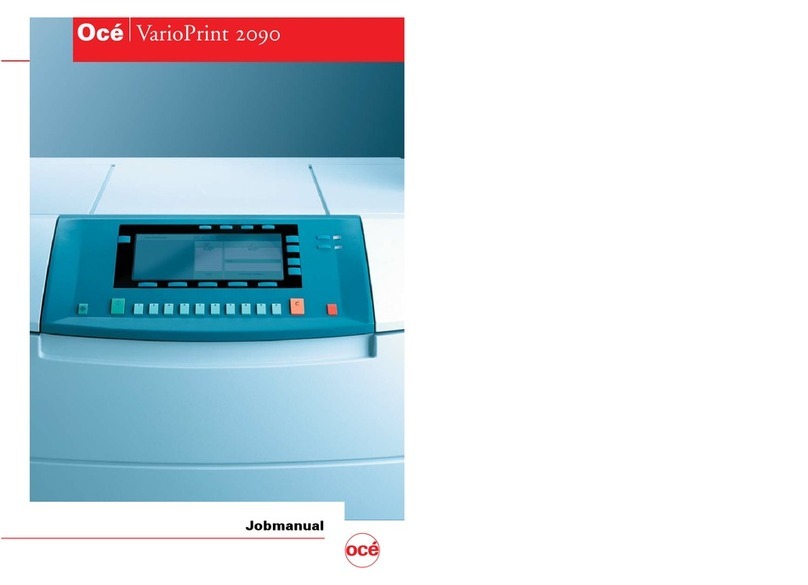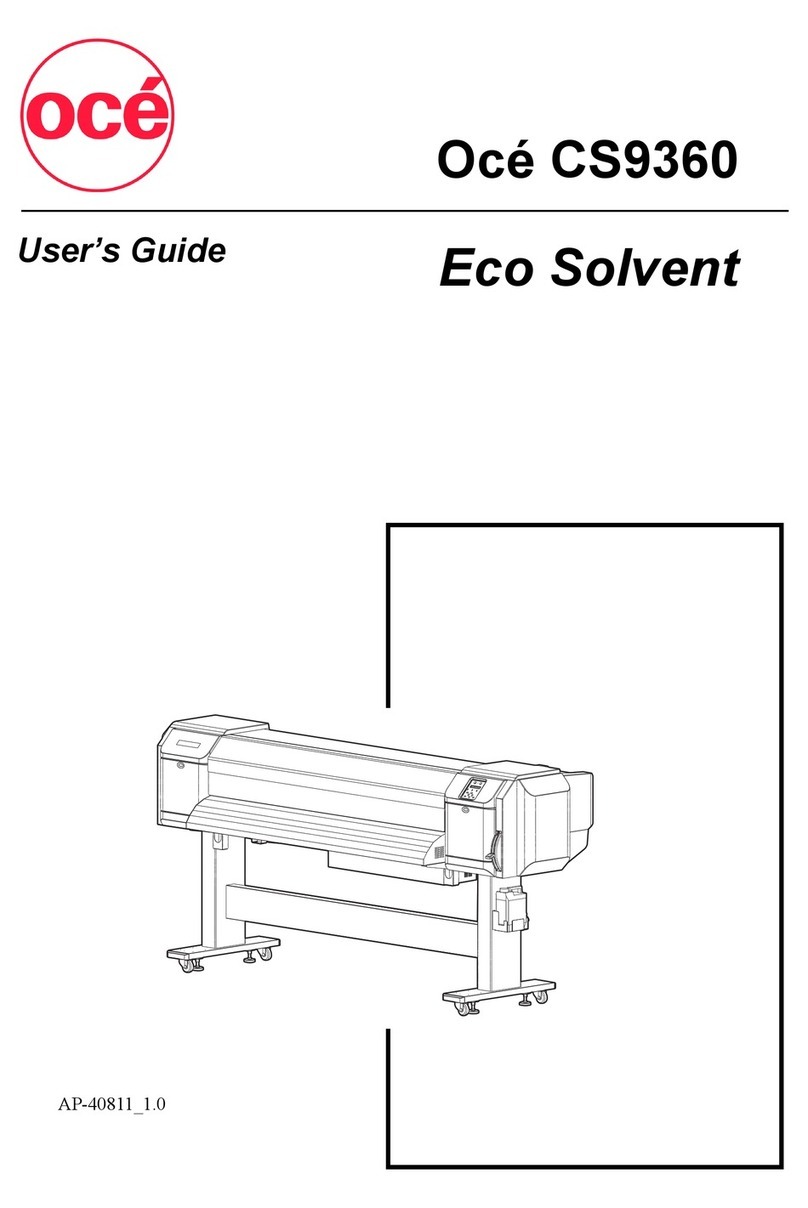
Copyright, Product Support, Product Compliance and Standards
45572-I see copyright, disclosure, use and duplication information on pg. iii iii
Copyright
© 2002 Océ Display Graphics Systems. All rights reserved.
This document contains information proprietary to Océ, to its subsidiaries, or to third parties to
which Océ may have a legal obligation to protect such information from unauthorized disclosure,
use or duplication. Any disclosure, use, or duplication of this document or of any of the
information contained herein for other than the specific purpose for which it was disclosed is
expressly prohibited, except as Océ may otherwise agree to in writing. Due to continuing research
and product improvements, features or product specifications may change at any time without
notice.
History of Document # 3010045572
Date Revision Revision Summary
Sept. 10, 2001 E Additional compliance information; new manual format; updated platform
requirements.
Sept. 20, 2001 F Fixed typo on page A-3.
Dec. 17, 2001 G Changed LightJet FE Host requirements, replaced Gretag with Océ.
Feb. 13, 2002 H Added info that manual also covers LightJet 430RS.
Apr. 16, 2002 I Added note on page 2-9 about clean dry air being necessary. Updated
phone numbers for service contacts.
June 12, 2005 J Updated temperature spec, service and PosterShop information.
Product Support, Documentation and Service
For further information on documentation and support for your LightJet®430 or for information
on other Océ Display Graphics Systems, please contact:
Océ Display Graphics Systems
13231 Delf Place, #501
Richmond, British Columbia, Canada V6V 2C3
Phone: (604) 273-7730 Fax: (604) 273-2775
Web: http://www.dgs.oce.com
FTP Site: http://www.cymbolic.com/ftp.html
Comments on this guide?
Océ maintains a comprehensive support structure for its LightJet® customers. Upon installation of
your printer, you will be provided with the name of the sales and service office responsible for
your account. Record this information, along with the serial number of your LightJet®430.
Always report service problems to the office assigned to your account at installation. Contacting
the factory directly may cause unnecessary delays in resolving your service issue.

